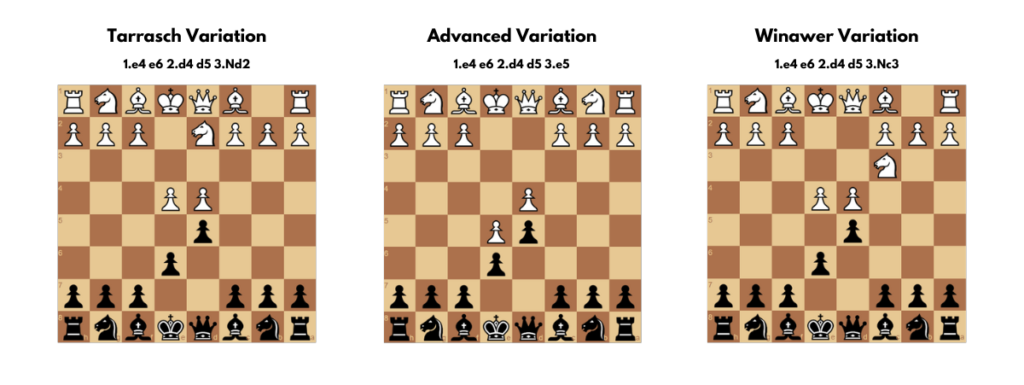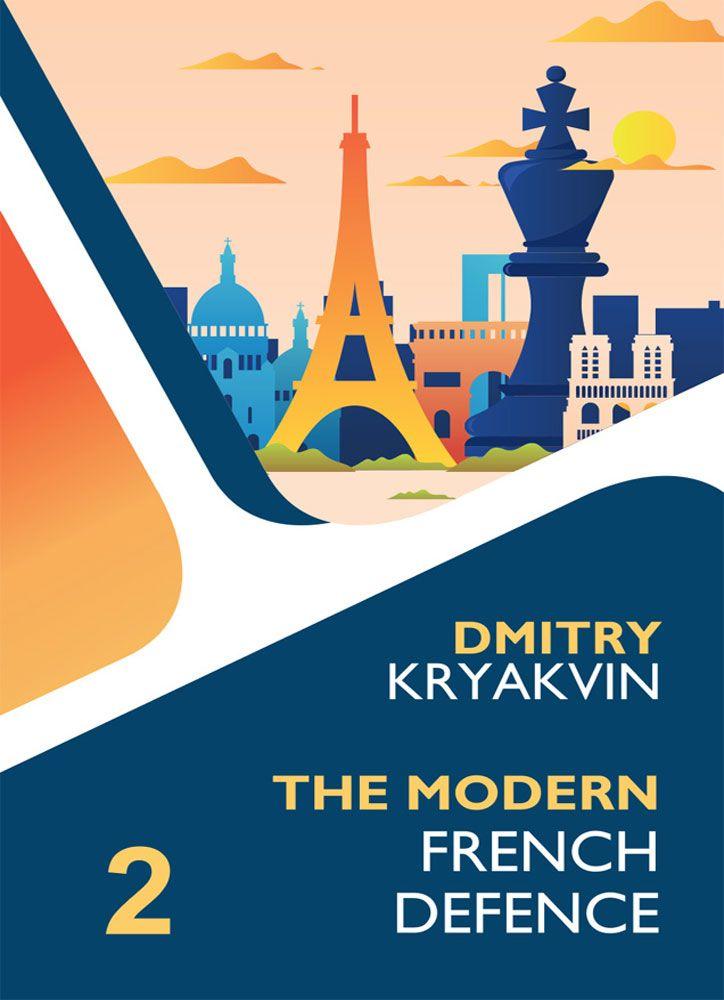Review of The Modern French – Volumes 1 and 2
“The French is one of the most solid defences to 1.e4. It has the virtues of simplicity and economy… It also has a drawback: it demands patience.”
– GM Lajos Portisch in his chapter in the book “How to Open a Chess Game”, RHM Press.
In his prime, the great Hungarian champion Lajos Portisch was noted for his excellent opening preparation, and the French Defense was an early favorite of his. Of course, the French Defense has had many notable followers, including Nimzovich, Botvinnik, Korchnoi, and Uhlmann, with the latter playing virtually nothing else against 1.e4. The French continues to attract many players of all levels, including the elite grandmasters Caruana and Nepomniachtchi. GM Dmitry Kryakvin also plays the French and he has now written a two-volume repertoire for Black.
The French has many different variations, ranging from the potentially drawish Exchange to the sharp Winawer. A major theme in the opening is the fate of the light-squared bishop. White generally has more space, and Black needs patience to undermine White’s center, as noted by Portisch.
The author has compiled a practical and detailed repertoire for Black. Volume 1 covers rare lines and the Tarrasch Variation, while Volume 2 covers the Advance and Winawer Variations. In keeping with the format of opening books from the publisher (Chess Stars), each chapter is split into two sections, namely “Main Ideas” and “Step by Step”. The first section provides a quick overview of the variation, and this is suitable to orient the reader on the key features of the variation being studied. Once the reader has absorbed this material, the details of the various branches can be studied in the “Step by Step” section, which provides an extensive repertoire on the variation. This is a sensible arrangement, although it does lead to some repetition of material.

These days, it’s inevitable that chess books will include extensive computer analysis, and these volumes are no exception. However, the author has made a genuine effort to explain his choices and the basic ideas behind them. For example, a major theme of the Tarrasch Variation (1.e4 e6 2.d4 d5 3.Nd2) is Black’s isolated d-pawn after 3…c5. Here, Kryakvin explains the basic ideas and provides three general rules and associated explanations on how to play these positions. It’s also pleasing that he provides repertoire choices at critical stages. For example, in the Tarrasch Variation, he offers 3…c5, leading to isolated d-pawn positions, and the slightly unusual 3…Nc6 (an early favorite of Portisch!), which leads to quite different positions.
The format of the volumes is very useful to learn the variations by progressing from an overview to the details. Both volumes also include various illustrative games (25 games in total). These games complement the theory and show how the game can develop after the opening phase is over. The game annotations are clear and provide a good overview of the games from start to finish. The author has put in a lot of effort into the books and his enthusiasm for the opening is evident throughout. As a bonus, he plays the French himself and hence he has good insights into the key features and strategic concepts of the opening. An example of his explanation of a critical position in the Advance Variation is as follows.
The Modern French: Example 1
In summary, these volumes provide a solid and clear repertoire for Black against 1.e4 using the French Defense. They can be recommended to a wide range of players who seek a reliable opening for Black, and one that still offers potential winning chances for Black.
Have any thoughts or questions? Let us know in the comments below!
- New Release: Chess Analysis – Reloaded - March 9, 2024
- Review: The Art of The Endgame – Revised Edition - February 14, 2024
- Review: Study Chess with Matthew Sadler - December 13, 2023


